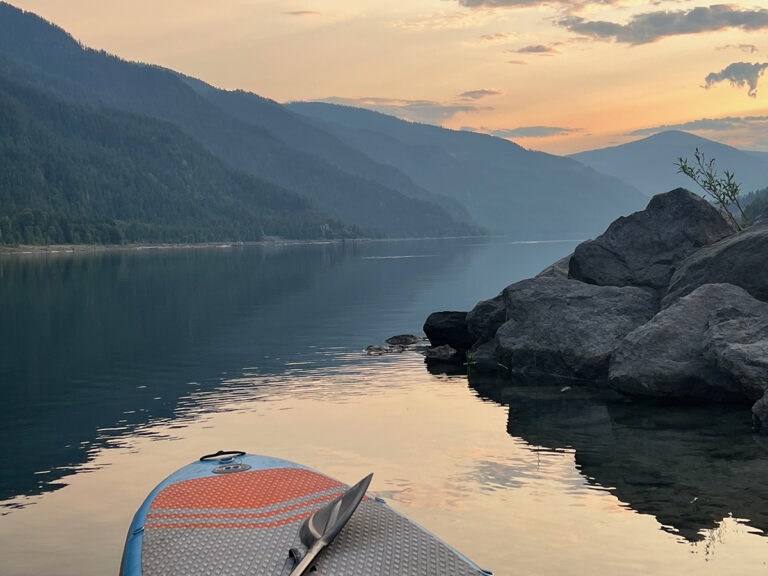Forever on the mountaIn
James M. tabor
W.W. Norton, 2007, 370 pages.
During the last week of July 1967 a prolonged, violent storm, an Arctic hurricane, struck Alaska’s Denali National Park. The storm spawned the worst climbing disaster in the history of the park and the third worst in the history of mountaineering up that time. The tragedy occurred near the summit of Mt. McKinley on the Muldrow Glacier Route. Seven of twelve climbers in what was officially known as the Wilcox Mt. McKinley Expedition died after eleven of the twelve members successfully reached the summit.
Forty years after the event, John Tabor casts a fresh eye on the events of that summer in an attempt to move beyond the controversy and establish real cause and effect relationships for the deaths. From interviews with all the surviving members of the expedition, the parents of several who perished and a few of the “officials” involved in the incident, Tabor pieces together the chronology of the climb and the ensuing disaster. But Tabor takes us beyond the known. Today’s understanding of high altitude physiology and psychology coupled with his own experience as a climber and scraps of information from radio transmissions from the team at the summit allows Tabor to crawl into the minds of the members of the ill-fated second summit team. An entire chapter follows these seven climbers to the summit and to their subsequent demise at the hands of nature.
While Forever on the Mountain includes revelations not in team member Howard Snyder’s 1973 account The Hall of the Mountain King or team leader Joe Wilcox’s 1981 account White Winds, Tabor acknowledges that there are still important unanswered questions. Join Tabor as he employs the techniques of forensic science to this most tragic, controversial and mysterious disaster in North American mountaineering history and you will begin to understand the complex bureaucracy that aided and abetted nature in claiming seven lives. The trip through this book will leave you informed, frustrated and saddened by the tragic loss of life.
Stan Miller
Don’t Forget The Duct Tape
Kristin hostetter
The Mountaineers Books, 2nd. Edition, 111 pages.
One thing becomes abundantly clear from perusing this gear-repair reference book: backpacking gear can fail in ways you never thought possible, so you’d be wise to view your stuff with suspicion. This compendium of gear-related problems, catastrophes, and dilemmas covers everything under the sun and is a good line of defense against allowing gear problems to ruin an outing.
Being the gear editor for Backpacker magazine, author Kristin Hostetter brings her considerable experience and knowledge to bear on this often overlooked subject. Backpacking gear is expensive and is subjected to harsh conditions and rough treatment. It could certainly benefit from routine cleaning and maintenance. And if that gear fails in the field, then knowing how to fix it is not only convenient, but it could potentially be life-saving.
As the title suggests, the book stresses the innumerable uses for duct tape. Scattered throughout the pages are “Duct Tape Tips” that show how this versatile product can fix almost any gear problem, at least temporarily. One caveat, though: the same quality that makes duct tape so useful-the adhesive-can also be the reason you should think twice about using it, and Hostetter is quick to point out when the residue left behind by the tape could be an issue.
Beyond duct-tape, the book addresses both classic gear, like Norwegian-welt boots, and the problems that occur with the latest trends in gear, such as hydration systems and synthetic fabrics and coatings. The contents of the book are logically and clearly organized by gear type for easy reference. The introductory chapter covers basics such as what your in-the-field and at-home repair kits should contain and a partial list of the ills that can be remedied with duct tape. Best of all, the book is small and light enough (3 oz.) to bring along in your pack for reference in the field.
David Tagnani
Make MagazIne #11
Mark frauenfelder-editor-in-chief
O’Reilly Media, 192 pages
I’ve always flIpped through Make magazine and thought it was nicely designed and printed and might have some interesting articles, but, quite honestly, I’m not looking to add any more projects to my life right now. Then issue #11 hit the stands with a cover story promising “D.I.Y. Wheels” with a cover photo of a bicycle mounted mobile drive-in movie projector. Okay. I give in. That’s something I would like to make.
The magazine’s subtitle is “Technology on your time.” Each journal-size issue has 200 pages of cool things you can build yourself. Some articles cover generalities or interview world-class tinkerers. Others get into detailed specifics including blueprints, step-by-step how-to photos, and handy lists of tools and materials you’ll need.
In this issue you’ll find a bunch of cool bike projects. The cover story involves creating your own battery powered video projector from a kit made from recycled computer monitor parts. There’s also piece on making “Granny’s Nightmare Chopper Bike,” building an iPod Bike Charger, adding an electric motor to a bike, and how to ugly up your bike to deter thieves.
Even though I grabbed this issue for the bike content, the one project I wanted to drop everything and do right now wasn’t a bicycle. It’s called “Ball of Sound,” a “low-cost spherical speaker array” made out of bright-red Ikea salad bowls. This I need.
Another great piece in this issue is a brief retrospective piece on Paul MacGready’s Gossamer Condor, the plane that made the first human-powered flight in history and inspired an Oscar-winning short documentary.
Make comes out quarterly and by the time you read this issue 11 may be off the newsstand. No worries. You can order this issue (the cover price is $14.99) from their website www.makezine.com. While you’re at it you might want to check out their sister magazine Craft, too. That is of course if you got some time for few cool projects in your life.
Jon Snyder













